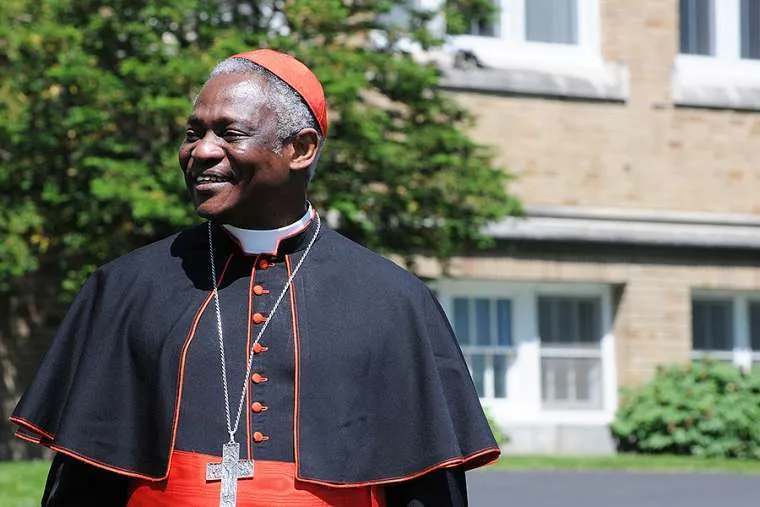The White House and shrine both said that the visit had been planned in advance of the demonstrations in Washington, D.C., and other cities. A spokesperson for the shrine said on Tuesday that the White House “originally scheduled this as an event for the president to sign an executive order on international religious freedom.” Trump signed the executive order later that day.
On Friday, Gregory said that Pope St. John Paul II “was a man of incredible concern about the dignity of human beings” and even before his pontificate “was battling systems” that were intended to “deny human dignity.”
“That shrine is a holy place because of the man that it honors,” Gregory said, and it never should have been used as a “political statement.”
After some Catholics criticized Gregory’s outspoken response, he said Friday that he found the reactions “reminiscent, in my mind, to the criticism that people gave to Catholic priests and nuns that they saw marching during the civil rights period.”
“The Church lives in society,” he said. “The Church does not live behind the four doors of the structures where we worship.”
(Story continues below)
Panelists also discussed the intersection of racism and the new coronavirus pandemic. Gregory said that racism is similar to a virus in that both “are things that impact our lives that frighten us, but also come in silent and oftentimes undiscoverable ways.”
African-American communities were some of the last U.S. communities to have available testing for the virus, McCloud said. Even zoo animals and star athletes were being tested for the virus before the “equitable testing of African-American communities,” he said.
Purvis addressed the arguments that mass protests might put lives in danger by spreading the virus. Participants are well aware of the dangers of catching the virus, she said, but this speaks to the gravity of the issues of racism and police brutality they are protesting.
“The Lord is calling the entire nation to repentance,” Purvis said. Catholics should examine their consciences to see how they might have demeaned their neighbor in thought, word, or act. Catholics can always ask God, “please show me my brokenness,” she said. “He will do that.”
Offering a concrete way for Catholics to fight racism, she said “Listen to people of color. Just listen.”
The pro-life movement should also get involved to fight racism, she said, as the “Gospel imperative” behind the movement “is about the human person.”
“The call of this movement is to say we don’t want the power of the state used against us,” she said of the racial justice movement.
In her remarks, Chatelain, the Georgetown professor, asked whether Catholics are really willing to sacrifice, and to change their own attitudes, to address racial injustice.
Gregory offered that he is hopeful about change, because “if you look at the faces of so many of the protesters, the quiet, gentle, peaceful protesters—they’re white faces. There are many more white faces involved in this response than I ever saw before. And that gives me a spirit of hope that somehow this is more than just a passing moment. I pray that it’s more than just a passing moment.”








